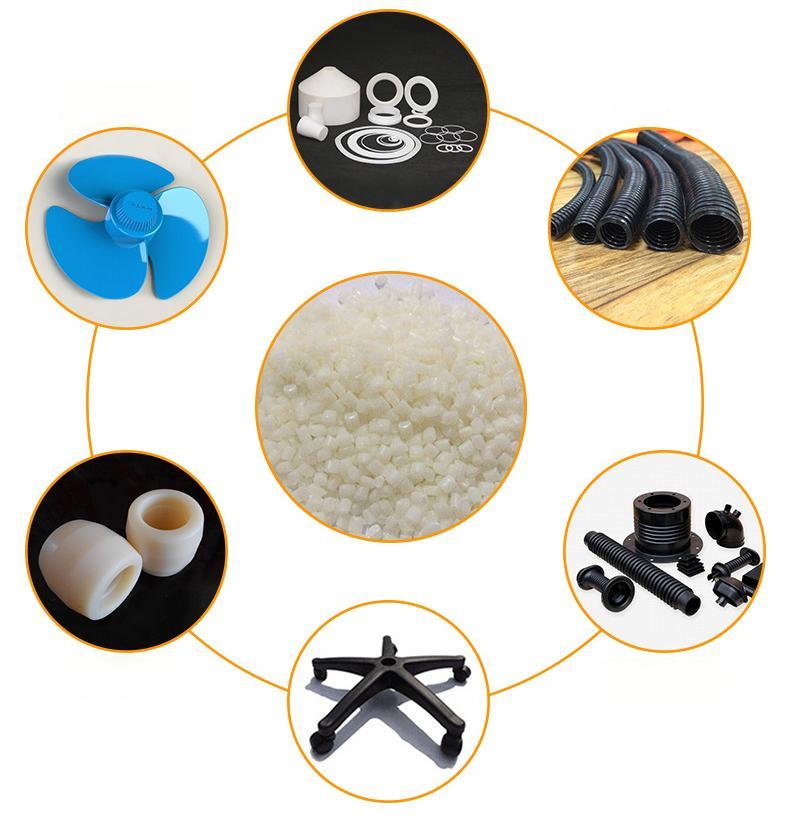Cross-border empowerment: How nylon profiles reshape the ecology of six major industries
Abstract:
From precision mechanical gears to medical catheters that protect lives, from speeding car engines to smart electronic devices, nylon profiles are breaking through the boundaries of traditional materials with their unique lightweight, corrosion resistance, self-lubrication and high insulation properties. This article will deeply analyze the innovative applications and core advantages of nylon profiles in six major fields: machinery manufacturing, automobile industry, electronic appliances, construction engineering, textile equipment and medical devices, and reveal how it has become an indispensable “hidden champion” in the upgrading of modern industries.

I. Machinery manufacturing: a silent and efficient transmission revolution
In the field of machinery manufacturing, nylon profiles are replacing metals as the first choice for precision transmission parts. Its excellent self-lubricating properties greatly reduce the friction coefficient, significantly reducing the noise of small gears when running in power tools, and reducing energy loss by more than 15%. This feature not only extends the life of the tool, but also improves the user experience-when the harsh friction sound of traditional metal gears is replaced by the quiet operation of nylon, production efficiency will steadily increase in silence. For example, professional tool manufacturer Bosch uses customized nylon gears in its high-end electric drills to achieve nearly silent high torque output.
II. Automotive industry: A green future driven by lightweighting
In the battle to reduce emissions in the automotive industry, nylon profiles are a key lightweight pioneer. Taking the engine hood as an example, nylon parts can reduce weight by up to 40% compared to traditional metals, directly helping to reduce fuel consumption of the entire vehicle. Its ability to withstand temperature fluctuations from -40°C to 120°C and resist oil corrosion (in compliance with SAE J2640 standards) ensures stable service in the harsh environment of the engine compartment. In its Efficient Dynamics technology system, the BMW Group uses a large number of nylon intake manifolds and other components, achieving a double breakthrough in vehicle weight reduction and thermal management efficiency.
III. Electronics and electrical appliances: Technological armor for insulation protection
نايلون profiles build a solid insulation defense line in the electronics field. Its volume resistivity exceeds 10¹⁵ Ω·cm (according to IEC 62631-3-1), providing absolute safety protection for the housing of mobile phone chargers and other devices. High impact strength (cantilever beam notch impact strength> 5 kJ/m², ASTM D256) effectively buffers external forces and protects internal precision circuits. At the same time, excellent processing fluidity supports complex curved surface molding. Apple MagSafe charger housing uses glass fiber reinforced nylon to achieve the unity of strength and aesthetics in a slim design.
IV. building doors and windows: durable and weather-resistant sealing guards
In the key link of building energy conservation, nylon sealing strips show strong vitality. Its excellent weather resistance (passed GB/T 7141 aging test) can resist ultraviolet rays and extreme temperature differences, and its service life exceeds 15 years. The compression permanent deformation rate of EPDM blended nylon strips is less than 30% (GB/T 7759), which can maintain the sealing performance of plastic steel doors and windows for a long time, and achieve the trinity protection of sound insulation (noise reduction ≥ 30dB), heat insulation (K value increased by 15%) and waterproofing. The German Schüco door and window system is equipped with high-performance nylon sealing strips as standard, which has become the energy-saving cornerstone of passive buildings.
V. Textile machinery: a quality engine for smooth traction
The high-speed operation of the textile industry depends on the seamless cooperation of nylon rollers. Its surface friction coefficient is as low as 0.1-0.3 (ASTM D1894), making the fiber conveying as smooth as silk, and reducing the breakage rate by more than 20%. The wear-resistant characteristics (abrasion loss <40mg/1000r, GB/T 5478) ensure long-term use without groove marks and guarantee the uniformity of the yarn. Swiss Rieter combing machine uses ultra-precision nylon drafting rollers to keep the CV value of top-grade cotton yarn stable within 1.8%, achieving the smooth quality of fabrics.
VI. Medical devices: flexible bridge of life channel
In the field of medical health, nylon catheters interpret the ultimate of life care. Its biocompatibility has passed ISO 10993 certification and coexists harmoniously with human tissue; the precise control of elastic modulus 1-3GPa makes the catheter both flexible and easy to insert and resistant to collapse. Nexiva™ closed-cell venous catheter of BD Company in the United States uses ultra-smooth nylon cannula, which reduces the pain of puncture by 40% and builds a gentle life channel for patients.
الخلاصة:
From the roar of machinery to the silence of medical treatment, from the grandeur of architecture to the subtlety of electronics, nylon profiles are deeply embedded in the modern industrial texture with a “cross-border posture”. Its application map in six major fields is not only a victory of material performance, but also a proof of human beings breaking through physical limitations through science and technology. With the continuous evolution of modification technology – such as carbon fiber reinforced nylon pushing strength to new heights, 3D printing unlocking the free manufacturing of complex components – the boundaries of nylon profiles are still expanding. In the wave of industrial upgrading, it will continue to reshape every dimension of our production and life in a silent but critical way.
Materials are metaphors of the times. The cross-border journey of nylon profiles is the reweaving of the macroscopic world by human wisdom at the microscopic scale – when the toughness of the molecular chain is transformed into the toughness of industry, the gene of innovation is deeply rooted in every pulse of civilization progress.
